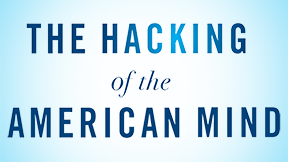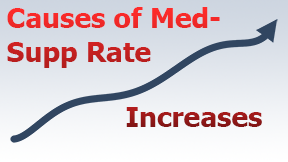 In early October you should have received your Annual Notice of Change (ANOC) from either your Part D prescription (PDP) plan provider or your Medicare advantage plan company. If you didn’t receive your ANOC, be sure to contact your plan and ask for one. They should also be available online.
In early October you should have received your Annual Notice of Change (ANOC) from either your Part D prescription (PDP) plan provider or your Medicare advantage plan company. If you didn’t receive your ANOC, be sure to contact your plan and ask for one. They should also be available online.
Yes, we understand that you are overloaded with information, and who wants to read more boring info. A year ago, Humana announced in their ANOC that they were discontinuing their existing PDPs and coming out with new plans for 2020.
They also announced that the people on the 2019 Humana Walmart plan—if they did nothing—would be placed on the new ~$52 Humana Premier PDP for 2020. Fortunately, many of you contacted us and we were able to find a more cost-effective plan for you for 2020.
We also alerted people about this situation in two issues of our e-letter, Northwest Senior News. Unfortunately, some folks missed the notices and were stuck on the more expensive plan for 2020. If you currently have the Humana Premier plan, be sure to contact us this fall if you have not already done so.
History Repeats
We have a similar situation this fall. Mutual of Omaha (MoO) has offered two PDPs the past couple of years. We have signed up many of you for the MoO Value plan. Unfortunately, MoO is discontinuing that plan going into 2021. If you do nothing, you will automatically be placed on the Mutual of Omaha Plus PDP with a premium of around $70 per month.
If you have the Mutual of Omaha Value PDP, be sure to contact us. We also will also be contacting you as time permits during the fall Annual Election Period (AEP). Be sure to review your ANOC.
PDP Basics
It’s important to understand how most of the lower premium PDPs under $50 per month are structured.
Typically, tiers 1 and 2 (generics), are not subject to the $445 (in 2021) deductible. Tiers 3, 4, and 5 are subject to the annual $445 deductible. Usually, tiers 3, 4 and 5 are name brand drugs. However, there are many generics sprinkled throughout these three tiers.
A plan sponsor, at its discretion, can opt for a lower deductible. For example, a plan could set the deductible at $300 instead of the maximum $445.
More expensive plans in the $70 and up monthly premium range usually do not have a deductible. That’s one reason why their premiums are substantially higher. They also have more drugs on their formulary, particularly expensive brands. Because so many popular prescriptions have gone generic, very few people need these higher-octane plans.
To sum this up, most of us have a PDP where the deductible is waived for generic tiers 1 and 2. Knowing the above is very helpful in understanding what’s next.
The new kid on the block
There is a major company that has come out with a new, low priced PDP for 2021. The premium will range from about $6.10 to $7.50 per month depending on your state. That’s right, the premium is less than $10!
Okay, what the catch? There are two of them. First, you really want to use a preferred pharmacy from their list, as your copays will be substantially higher at a standard pharmacy. Note: Walmart is a standard pharmacy with this plan.
Second, only tier 1 generics are excluded from the $445 deductible. That means any tier 2 generics are subject to the deductible as well as tiers 3, 4, and 5. However, this plan seems to have a wide range of tier 1 generics, and they are available for a low or even no copays.
Who are good candidates for this plan?
1) Those who take no prescriptions. The name of the game is usually to have the lowest premium.
2) Those whose prescriptions are all tier 1 generics on this plan and are willing to use one of their preferred pharmacies.
Please use PDPhelper.com to submit to us a list of your current prescriptions, and we will shop it for you for the upcoming 2021 season. We’ll let you know your most cost-effective choice of the available plans.
The biggest mistake that some people make.
When discussing the upcoming new PDPs with some people, we hear, “But my plan [meaning the existing one] is this or does that…” Yes, we understand that this thought process is based on what you know and understand. The problem is that it’s like driving forward, with your eyes glued to the rearview mirror.
The reason that this is a problem is because the prescription drug plans change every year. Companies discontinue older plans and create new ones. Drugs can be added or deleted from the plan’s formulary. Pharmaceutical companies bring new drugs to the market, and they are usually expensive. Just one of them can throw you into the coverage gap.
Additionally, the status of any given pharmacy can change with the plan. We have noticed that this is especially true with the smaller, independent pharmacies.
Drive with your eyes looking forward!
The Coverage Gap
And speaking of the coverage gap, also known as the doughnut hole, your cost sharing while in the gap is 25% of the cost for generics and name brands. Some plans may have lower cost sharing for tier 1 and 2 generics while in the gap.
Once the retail cost of your prescriptions hits $4,130 in 2021, you will be in the gap. Once your TrooP (true out-of-pocket) hits $6,550, you go into the catastrophic stage with drastically lowered copays. Please keep in mind that you will not actually be paying out $6,550, because the manufacturer’s 50% discount counts toward your TrooP costs.
Conclusion
As stated above, we strongly encourage you to use our PDPHelper.com website as a way of submitting of list of your current prescriptions to us. We thank you for your patronage and wish you the best for the upcoming 2021 season. End.
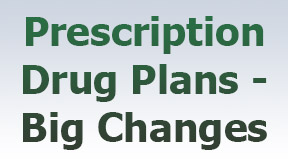 It seems like not a year goes by without some major shakeup regarding either Medicare advantage or Medicare Part D Prescription (PDP) plans. This year we have changes on steroids.
It seems like not a year goes by without some major shakeup regarding either Medicare advantage or Medicare Part D Prescription (PDP) plans. This year we have changes on steroids.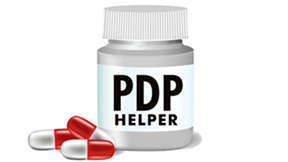 This 2019 AEP is our fourth year of using
This 2019 AEP is our fourth year of using  221 million prescriptions…
221 million prescriptions…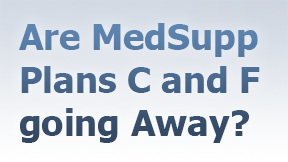 Note: I thank Ron Iverson, president of NAMSMAP* for assembling this data. This information comes from the National Association of Insurance Commissioners. *National Association of Medicare Supplement and Medicare Advantage Producers. This article is a revision from one published earlier this year.
Note: I thank Ron Iverson, president of NAMSMAP* for assembling this data. This information comes from the National Association of Insurance Commissioners. *National Association of Medicare Supplement and Medicare Advantage Producers. This article is a revision from one published earlier this year.